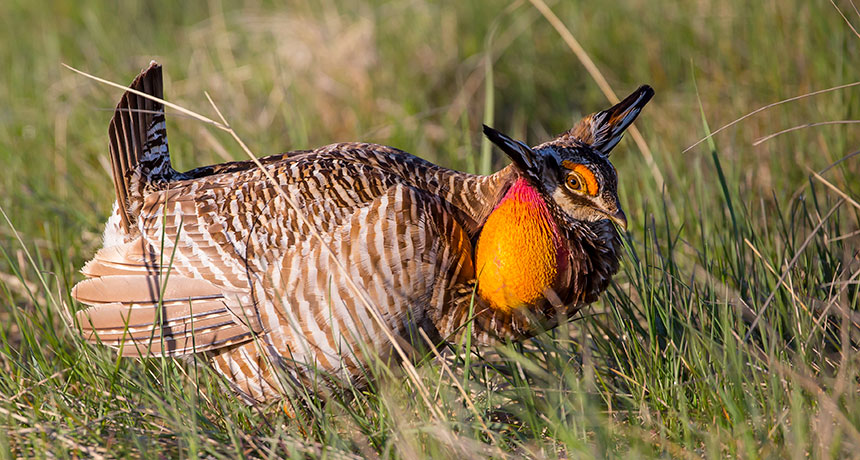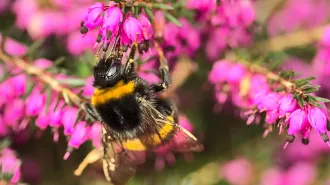In the animal kingdom, what does it mean to be promiscuous?
There’s little consensus over the use of the word in scientific studies, an analysis shows

WHO ME? Bird scientists consider species like the greater prairie chicken to be promiscuous because the birds have no relationship with their sexual partners beyond copulation.
JackVandenHeuvel/iStockphoto
MILWAUKEE — When it comes to the sex lives of animals, scientists have a slate of explicit terms to describe the proclivities of species. But researchers may be playing a little fast and loose with one of those words. Just what sort of activity qualifies an animal as promiscuous?
A review of almost 350 studies published in scientific journals in 2015 and 2016 found that the label was being applied to a surprisingly wide range of mating behaviors in animals, including humans. “This idea of promiscuity seems to mean different things to different people,” says Sarah Jane Alger, a behavioral neurobiologist at the University of Wisconsin–Stevens Point.
Promiscuity was referenced in about half of the studies, says Alger, a coauthor on the study presented August 3 at the annual Animal Behavior Society conference. She and colleagues found that the term was used to describe everything from rats that mate multiple times with any rat of the opposite sex they encounter, to kingbirds that pair up for several years and share parental duties but also mate with other birds, to some populations of lagoon triggerfish that don’t encounter enough potential mates to be choosy.
Lumping all of these disparate scenarios under one term “misses the potential to explore some really interesting and complicated patterns in animal mating systems,” says behavioral ecologist Brent Burt of Stephen F. Austin State University in Nacogdoches, Texas.
The sheer variety and fluidity of behavior found in the animal kingdom may be behind some of the confusion. Some species, and even some individuals, change sexual strategy based on ephemeral things like the relative abundance of food, potential mates or predators.
“A lot of mating systems don’t fit into perfect little boxes,” Alger says.
How promiscuity is defined also may depend on which species is being scrutinized, says Burt, whose research focuses on birds. The vast majority of bird species are considered monogamous because they form long-term bonds and share parental duties with one mate. Even if those partners are getting some side action, they are labeled “socially monogamous,” like the superb fairy wren. Truly faithful species like the Florida scrub jay are said to be “genetically monogamous.” Bird researchers generally use promiscuity to describe only the relatively rare bird that has no relationship with its sexual partners beyond the deed itself, like the greater prairie chicken, Burt says.
Choosiness can also affect whether a species is branded as promiscuous. Those that appear to mate at random and others that have too few potential mates to be selective are both sometimes described as promiscuous. It’s even possible to have a species that’s labeled monogamous, because individuals have only one partner, and promiscuous, because there’s little or no choice in mates, says study coauthor Lisa Fowle, a recent Wisconsin graduate. The promiscuous label “was being used for multiple partners almost the same amount that it was being used for only one partner,” she says. “That was really surprising to me.”
Another unexpected result was that the word was used equally to describe both sexes. Alger suspected usage would be skewed based on previous research that found a pronounced bias toward describing female animals as promiscuous in studies published in Animal Behaviour from 2000 to 2010. The authors of that 2013 Frontiers in Zoology study suggested that the gender bias might be related to the pejorative use of the word to describe women in many human cultures.
Other terms at scientists’ disposal don’t have negative connotations and are also more precise, says behavioral ecologist David McDonald of the University of Wyoming in Laramie. For instance, there’s polyandry (females have multiple mates), polygyny (males have multiple mates) and polygynandry (both sexes have multiple partners).
Researchers would do best to avoid using “promiscuity” altogether, McDonald says. “I think it’s just a bad word to use in science because it’s such a loaded term.”






